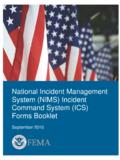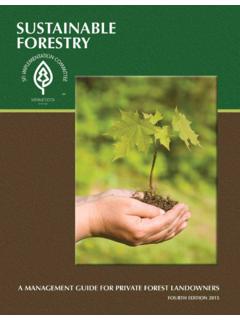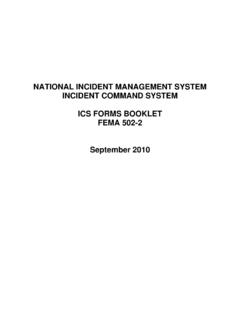Transcription of A game exploring the trading relationship …
1 How does this activity relate to Fairtrade? Awareness of Fairtrade and Fairtrade products provides a real opportunity for children to actively engage in challenging the unfairness of world trade and supporting justice for the world s poorest producers. A game exploring the trading relationship between rich and poor countries and addressing key elements of the The trade game Relevant elements of the Year 5 NNS Teaching Programme (p22-23) Suggested focus for this activity in italics: Know by heart all multiplication facts up to 10 x 10 Derive of all whole numbers 1 to 100 Understand, measure and calculate perimeters of rectangles Understand area measured in square centimetres (cm ) Understand and use the formula in words length x breadth for the area of a rectangle Choose and use appropriate number operations to solve problems, and appropriate ways of calculating.
2 Mental, mental with jottings, written methods Explain methods of reasoning, orally and in writing Solve mathematical problems or puzzles, recognise and explain patterns and relationships, generalise and predict Explain a generalised relationship (formula) in words. Educational aims of the game To demonstrate the unfairness of trading relationships and inequality between rich and poor countries To show how countries are often forced to damage their environments in order to engage in trade To understand that choices can be made from personal choices to local and global choices and recognise such choices have consequencs To help develop co-operation and group-work skills: accepting and acting on group decisions To enable children to recognise and start to challenge unfairness To equip children with the knowledge and understanding to empower them to take positive actions which ensure greater social justice and protect the environment.
3 Many of these aims are based on the Oxfam Curriculum for Global Citizenship, available from Oxfam Education, 274 Banbury Road, Oxford, OX2 7DZ Suggested lesson structure Mental or oral work The lesson could begin by discussing/revising how to calculate area and perimeter and giving children mental calculations, what is the area/perimeter of a rectangle with length 6cm and breadth 8cm? Answers could be written onto individual white boards. The main teaching activity The main aim here will be to present the children with the challenge posed by the game and explain the rules. In teams children must draw bird s-eye view rectangular tables with an area of 24cm and also calculate the corresponding perimeter.
4 Children should be divided into four or five groups, preferably mixed ability, with a maximum of 6 children in each group. Each group represents a different country. As most teams will not have all the necessary resources at the beginning of the game, namely pencils, rulers and mahogany logs (paper) to produce the tables, countries will need to trade with each other to obtain the necessary resources. Resources needed The game requires: paper or plastic money, rulers, pencils, sheets of scrap paper (30 x A4 paper). Each team/country is given only the resources identified. They may only obtain Country 1 No paper, 5 rulers, 10 pencils and 20 cash Country 2 2 sheets of paper, 1 ruler, 1 pencil and 20 cash Country 3 8 sheets of paper, no ruler, 1 pencil and 5 cash Country 4 (If 5 teams are playing) - as for Country 3 Country 5 20 sheets of paper only Through knowledge of the Fairtrade Mark and what it indicates, children can encourage their parents to purchase Fairtrade tea and coffee and other goods carrying the Fairtrade Mark.
5 They can also commit themselves personally to purchasing Fairtrade chocolate brands such as Divine, Dubble and Green and Blacks and Fairtrade bananas now available at most supermarkets. Getting the most out of the trade game For three minutes before the game begins each team should: Discuss which resources they have and which they need to draw tables accurately: for the accurate drawing of tables, each country must have a pencil, ruler and mahogany log (paper) Decide on one runner who will be responsible for visiting other countries to trade and visiting the World Bank (alternatively there could be a rule of only one person away from the country at a time ) A short plenary should follow to enable children to raise questions and ensure that each team is clear about the rules of play. Questions about the winner of the game should be deflected and saved for discussion later, as should observations about the game being unfair.
6 General rules Resources can only be purchased at the world rate . No swapping, undercutting or underhand deals are allowed! Rates: 1 per log 5 per pencil 10 per ruler Each table top must be accurately drawn to have an area of 24cm and the perimeter of the particular table must be written inside the rectangle Each accurately drawn table with correctly calculated perimeter can be sold to the World Bank for 10 The game should be played for at least 20 minutes Plenary session - see also global citizenship and trade At the end of the game, each team can report on the strategy they adopted to engage in the game.
7 The different tables of 24cm they discovered and why they felt they did badly or well. Which rectangle has the longest/shortest perimeter? Is there a relationship between shape of rectangle and perimeter? (long and thin = big perimeter; nearest shape to square = smallest perimeter) What formula can be used to find the perimeter of a rectangle? (add rectangle dimensions and double, 6x4cm rectangle = (6+4)x2 = 20cm) Notes: Whether repeated tables of the same dimension are accepted or whether a rule about finding/drawing more than one shape of 24cm table is added is left to the teachers discretion. Sometimes this game works more effectively over two sessions, enabling children to become more familiar with how it works. In this case on the second time of playing, children could take on the role of a different country and the rectangle area could be different, 36cm.
8 Global Citizenship and trade The following questions and issues can be discussed in a plenary session or at another time outside the numeracy lesson. Discuss with children which countries they think could be represented by each team and why, USA or western nation with all the technology, poor southern country such as Cameroon with rainforests but little technology Discuss the issue of fairness. Do they believe that it was a fair game? Why or why not? What would have made it fairer? As a representation of the way trading works in the real world, what actions can we take to ensure a fairer deal for people selling us goods from poorer countries? This will provide an opportunity to discuss the contribution Fairtrade can make to providing a fairer deal for producers and protecting the environment and its resources. Who do they consider the winning team to be and why?
9 Which teams do they consider did well and which badly and why? How differently would the game have been played if the winning team had been the one with the most logs/trees at the end of the game? Do we need mahogany or other rainforest timber? This will provide an opportunity to discuss the importance of rainforest eco systems and address the implications of resource choice and consumption on the environment. Children could be introduced to the Forest Stewardship Council (FSC). Any timber marked with the FSC logo has come from a forest that is managed in a more sustainable manner. Details at: Further resources The following is a list of titles which will offer opportunities for further activities on issues of Fairtrade for KS2. They should be available through your local Development Education Centre (DEC). The Clothes Line Oxfam Go Bananas Oxfam Making a Meal of It Oxfam The Whole World cake Christian Aid Free leaflets available from Christian Aid: People friendly coffee and Time for Tea.
10 Dubble, the Fairtrade chocolate bar has a teachers/pupils website offering free primary packs about fair trade and chocolate Locococo An exciting game involving trading in cocoa beans and Fairtrade chocolate. Learn about global trading issues and the Rights of the Child. Suitable for Year 6 upwards. English or Spanish. Price: 18 including p&p. Available from the Humanities Education Centre. Feedback on these activity ideas would be much appreciated. Comments can be sent to HEC or your local DEC or made via the Global Footprints website. Oxfam 274 Banbury Road, Oxford OX2 7DZ Tel:01865 313600 Produce a range of global citizenship education packs. Education catalogue contains extensive range of resources across the curriculum. To order phone 01202 712933. Also have a website dedicated to teachers and children which contains information and activities: Chocolate, one of the most popular foods in the Western world, is dependent on a supply of cocoa from the countries of the South.








